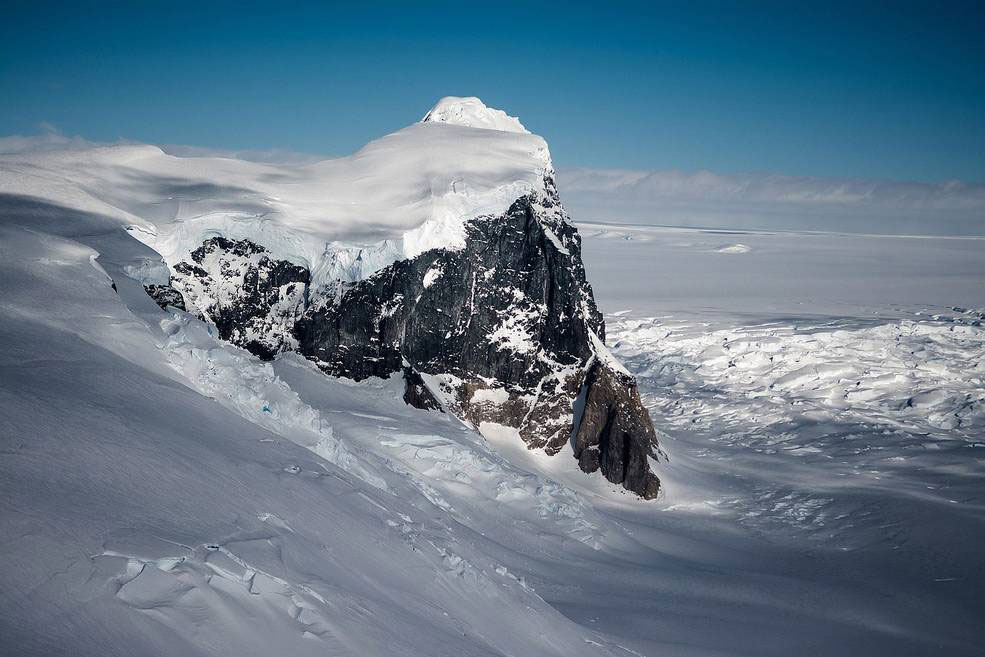
A rock outcropping on Fleming Glacier, which feeds one of the accelerating glaciers in Marguerite Bay on the western Antarctic Peninsula.
A NASA study has located the Antarctic glaciers that accelerated the fastest between 2008 and 2014 and finds that the most likely cause of their speedup is an observed influx of warm water into the bay where they’re located… Captions and Photo source: NASA/OIB
Excerpts;
Another glacier in Western Antarctica has been cracking from the inside out, producing another massive iceberg — four and a half times the size of Manhattan — this week. All these big chunks of ice, however, calved out from floating ice shelves. That means the ice loss doesn’t raise sea levels by itself. (The same goes for ice cubes in a glass of water: when the ice cubes melt, the water level in the glass doesn’t rise.) But the floating ice shelves do create a barrier that keeps the ice on land from flowing into the sea.
The study is the first one to show that warmer waters aren’t just affecting floating ice — they’re already also causing melting in those grounded glaciers that have the potential to raise sea levels, says study co-author Catherine Walker, a NASA postdoctoral fellow at JPL…
Read Full Article; The Verge (09-26-2017)
Wind, Warm Water Revved Up Melting Antarctic Glaciers; NASA (09-19-2017)
A NASA study has located the Antarctic glaciers that accelerated the fastest between 2008 and 2014 and finds that the most likely cause of their speedup is an observed influx of warm water into the bay where they’re located.
The glaciers’ acceleration lasted from mid-2008 to 2012. After that, they slowed down but have continued to flow faster than they did before the warm water arrived.
The four glaciers are in Marguerite Bay on the western side of the Antarctic Peninsula. Before 2008, their flow rates and rates of thinning (a measure of ice loss) had been stable for almost two decades — since the Wordie Ice Shelf in front of the glaciers collapsed in about 1989. The collapse broke off almost all of the floating portions of the glaciers, leaving the parts that are grounded on bedrock.
“Grounded ice is a major concern for sea level rise, because it hasn’t contributed to sea level yet,” said the new study’s lead author, Catherine Walker of JPL. “Floating ice has already made its contribution to the sea level.”
After two decades of relative stability, the magnitude of the glaciers’ acceleration was unexpected…









